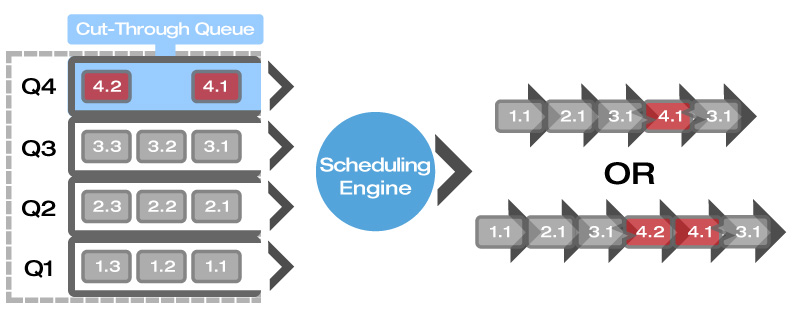Delivering more security and higher QoS
To make a high-capacity backhaul network useful to public-safety organizations, equal consideration must be given to the underlying technologies that shape, prioritize and secure the transmission, in order to ensure a high level of service for mission-critical applications and provide a simple means to managing it all.
Low-latency sub-6 GHz systems—Licensed and unlicensed bands below 6 GHz will continue to be important frequencies for public safety. Mission-critical applications such as real-time video not only use more bandwidth, they require significant advancements in the latency performance of sub-6 GHz systems.
Traditional sub-6 GHz radios have experienced latency in the 6-7 millisecond range. This latency is sufficient for smaller networks with few hops, but the combined latency of such systems across larger networks often results in unacceptable levels of service degradation.
Emerging sub-6 GHz systems use advanced traffic-management and radio-transmission techniques to drive latency performance down to 1-2 milliseconds. This ensures that delay-sensitive traffic can be transported effectively, even in large daisy-chained networks with many hops back to the point of presence.
Enhanced quality of service (QoS)—As public-safety agencies add new traffic types (such as video) to their networks, it is essential that different traffic streams be assigned higher or lower priority levels to ensure that mission-critical traffic always is given top priority. Current microwave systems typically offer several queues that can be assigned specific priority levels, which are handled in weighted-fair-queuing or round-robin fashion.
Some microwave solutions take this a step further by offering packet cut-through technology, which enables the data path to suspend the transmission of the current frame, send a frame from a “cut-through” queue, and then resume transmission of the suspended frame. This results in much lower latency and packet-delay variation for time-sensitive traffic.

Figure 3 – Packet cut-through technology.
Encryption—Given the sensitive nature of public-safety communications, integrated encryption is an important consideration when selecting a microwave system. Some organizations also may look for systems that meet the Federal Information Processing Standard (FIPS) Publication 140-2, which is a U.S. government standard for the secure transmission of information. Microwave solutions that offer integrated 256-bit AES encryption, along with other advanced security features that protect both payload and management data, are classified as FIPS 140-2 compliant.
Single management platform—Another aspect of ensuring a higher-quality level of service is the choice of platform used to manage the day-to-day operation of the network. Organizations with multiple technologies managed by various systems have much more difficulty monitoring and isolating faults in the network, resulting in higher operational costs and increased network downtime—something few public-safety organizations can afford. Microwave solution vendors that provide a single management platform for the entire backhaul, including both licensed and unlicensed systems, offer a significant advantage to the network operator.
The many advances in microwave communications are giving public-safety organizations an attractive upgrade option for their existing backhaul networks. The capacity improvements seen in the industry remain well ahead of the rapid pace of new network demand. Advances in the performance, reliability and security of both licensed and unlicensed systems—managed under a single platform—provides a carrier-grade transport network for mission-critical applications.
With cost savings typically exceeding 90% when compared to fiber-based alternatives, the case for microwave backhaul in public-safety networks is perhaps stronger now than ever before, and will become even more viable as technological advancements continue in the market sector.
Chris York is product marketing manager for microwave solutions vendor DragonWave (www.dragonwaveinc.com).













